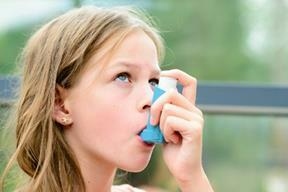SPECIALIZED IN ANTIVIRAL SOLUTIONS
Human Respiratory Syncytial Virus

The NTVIRIN have accomplished to cure the Human Respiratory Syncytial Virus (HRSV) diseases and it has an efficacy of 72.30 PERCENT in-vitro analysis and also it does not produce any cytotoxic effects during medications. The laboratory analysis of NTVIRIN shown a remarkable activity against HRS Virus. The initial load (log TCID50 of 6.35) of HRS Virus have been taken as control assay and NTVIRIN had run against RSV load, the efficacy had measured at different time intervals. The Virus load progressively decreased on reaction with NTVIRIN and thus the NTVIRIN solutions found to be log TCID50 of 4.53. The NTVIRIN has optimized for therapeutics of lower respiratory diseases of sinusitis, otitis bronchiolitis and pneumonia diseases, asthma and allergy.
MARKET STRATEGY OF HRSV PHARMACEUTICALS
The growing number of patient cases is expected to drive the market growth while the lack of appropriate in-vitro facilities for conducting research studies for newer treatment alternative shamper the market growth with a high impact over 2029.
As a result, the global Human respiratory syncytial virus (RSV) market is anticipated to grow at a moderate CAGR TO TEN PERCENT for the fourth coming periods, from 2024 to 2029

NTVIRIN PHARMACEUTICALS

The HRSV have also played acute viral infections for older adults and created chronic pulmonary disease and functional disability.
In general, Human Respiratory Syncytial Virus (RSV) pathogens causing lower respiratory tract infection in infants and young children worldwide and also characterized by bronchiolitis and pneumonia.
The virus does not have any animal reservoir. The HRS virus causes sinusitis, otitis bronchiolitis and pneumonia diseases, asthma and allergy in infants and young children, but still we do not have an efficient drug against RSV infection for clinical use. without doing any side effects.

and allergy



NTVIRN otitis bronchiolitis
Bronchitis is an inflammation of the airways leading into lungs. When the airways of trachea and bronchi get irritated, they swell up and fill with mucus, causing cough to the patient. The cough can last days to a couple of weeks.
It’s the main symptom of bronchitis. Viruses are the most common cause of acute bronchitis. Smoke and other irritants can cause acute and chronic bronchitis and it creates
- COPD or other breathing conditions.
- GERD (chronic acid reflux)
- an autoimmune disorder or other illness that causes inflammation
NTVIRIN pneumonia diseases
The air sacs may fill with fluid or pus (purulent material), causing cough with phlegm or pus, fever, chills, and difficulty breathing. A variety of organisms, including bacteria, viruses and fungi, can cause pneumonia.
Pneumonia can range in seriousness from mild to life-threatening. It is most serious for infants and young children, people older than age 65, found with health problems or weakened immune system.


